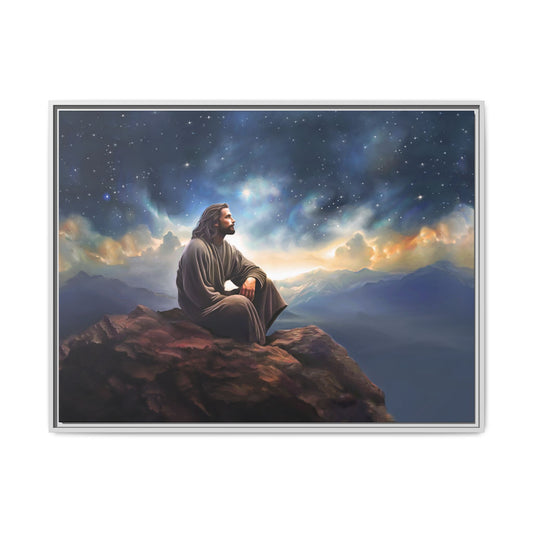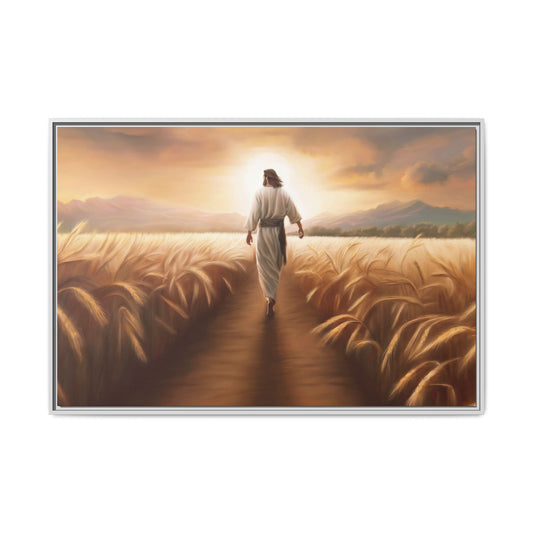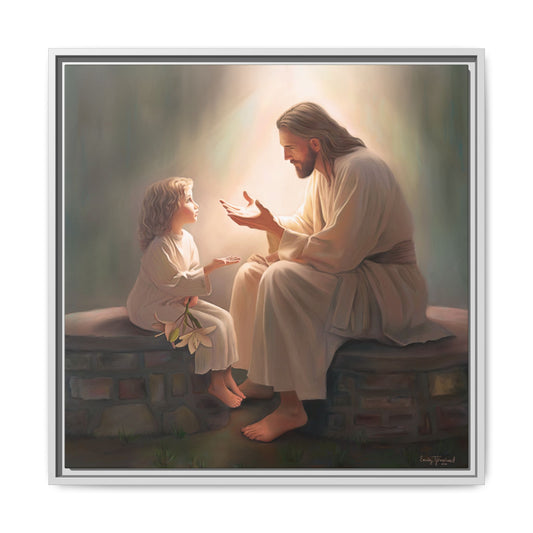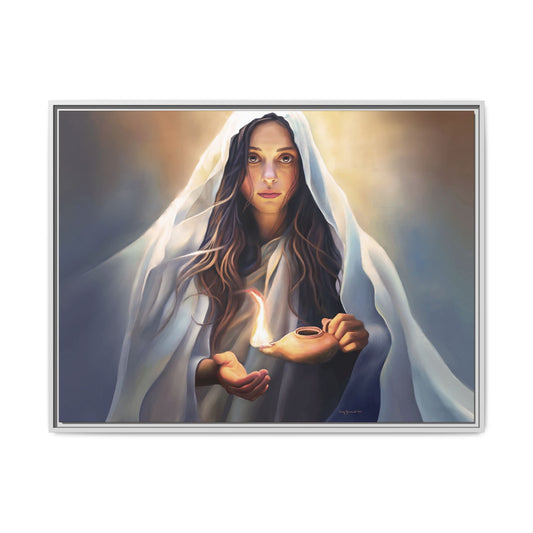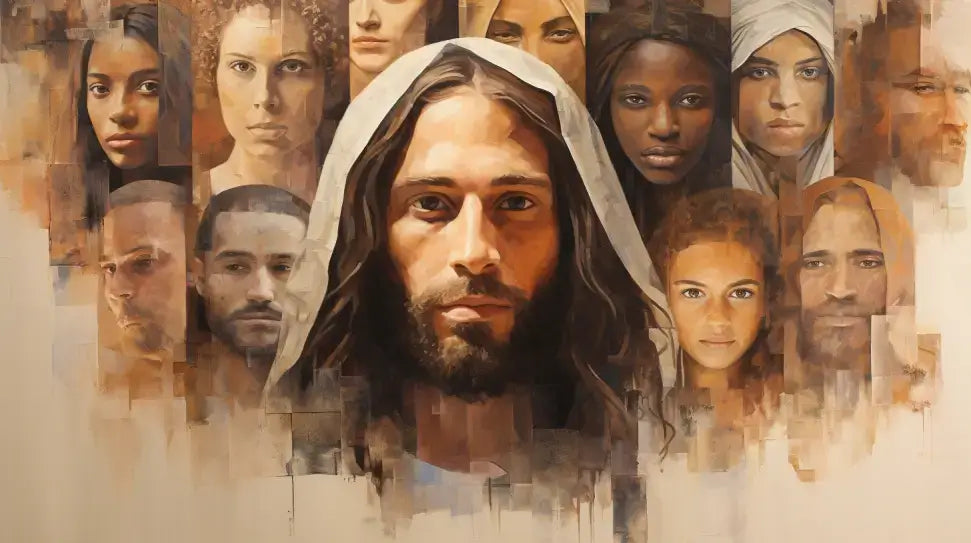
Jesus Christ Photo
Share
Just as a lighthouse guides ships safely to shore, a Jesus Christ photo can guide you toward remembering Jesus, love, and service. This visual symbol serves as a constant reminder of Christ's teachings, helping you to live a life of service to others. It's more than just a photo; it's a tool for reflection and can foster a deep connection with your faith. So, dive into the rich symbolism and powerful meaning behind these photos, and let them inspire you to walk in Jesus's footsteps every day.
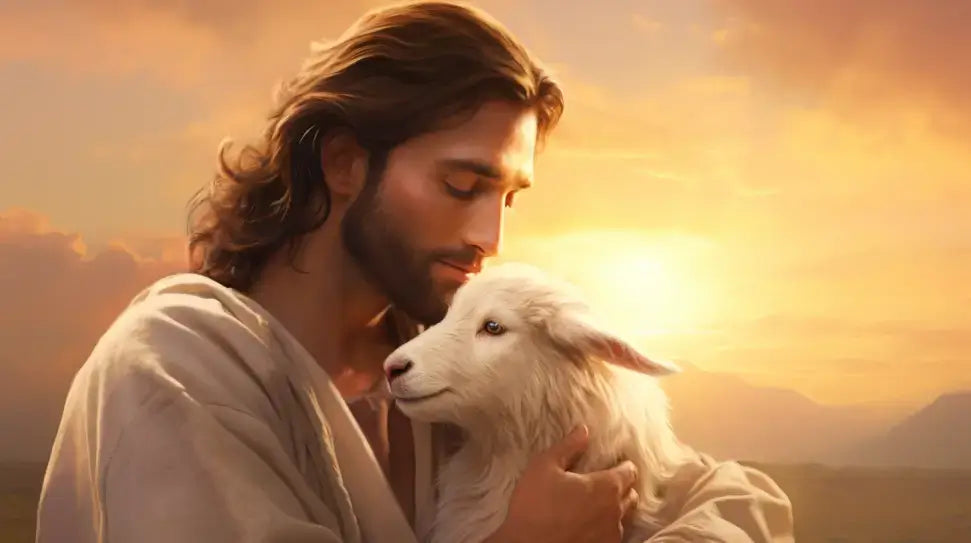 In envisioning "Jesus Christ Photo," we seek not a physical likeness but a portrayal that captures the essence of His teachings, actions, and divine love. Here are scripture references that highlight key aspects of Jesus Christ's character, serving as inspiration for artistic representations: Matthew 5:14-16: 'You are the light of the world. A town built on a hill cannot be hidden. Neither do people light a lamp and put it under a bowl. Instead they put it on its stand, and it gives light to everyone in the house. In the same way, let your light shine before others, that they may see your good deeds and glorify your Father in heaven.' This passage speaks to the illuminating presence of Jesus Christ, guiding artists to depict Him as a source of light and wisdom. John 10:11: 'I am the good shepherd. The good shepherd lays down his life for the sheep.' The imagery of Jesus as the Good Shepherd has been a powerful motif in Christian art, symbolizing His care, guidance, and the sacrificial nature of His love. Matthew 11:28-30: 'Come to me, all you who are weary and burdened, and I will give you rest. Take my yoke upon you and learn from me, for I am gentle and humble in heart, and you will find rest for your souls. For my yoke is easy and my burden is light.' These verses offer comfort and promise, inspiring portrayals of Jesus as a source of rest and refuge, inviting all to come unto Him. Luke 4:18-19: 'The Spirit of the Lord is on me, because he has anointed me to proclaim good news to the poor. He has sent me to proclaim freedom for the prisoners and recovery of sight for the blind, to set the oppressed free, to proclaim the year of the Lord’s favor.' This scripture reflects Jesus' mission of healing, liberation, and the proclamation of hope, directing artists to capture His compassion and purpose. 3 Nephi 17:24 (Book of Mormon): 'And when he had said these words, he wept, and the multitude bore record of it, and he took their little children, one by one, and blessed them, and prayed unto the Father for them.' This tender moment of Jesus blessing the children and showing His love for them is a poignant scene often depicted in art, emphasizing His kindness and love for all, especially the innocent and pure. Doctrine and Covenants 88:6: 'He that ascended up on high, as also he descended below all things, in that he comprehended all things, that he might be in all and through all things, the light of truth.' This verse speaks to the comprehensive and encompassing nature of Jesus Christ's ministry and atonement, encouraging representations that highlight His omnipresence and the depth of His sacrifice. Moses 7:55 (Pearl of Great Price): 'And the Holy Ghost fell on many, and they were caught up by the powers of heaven into Zion.' This passage can inspire depictions of Jesus Christ's role in bringing souls unto Heavenly Father, showcasing His role as the mediator and redeemer. Through these scriptures, artists and believers are invited to reflect on the multifaceted character of Jesus Christ—His divinity, compassion, wisdom, and love. Artistic interpretations inspired by these references seek to convey not just the physical image but the spiritual essence of the Savior, allowing viewers to feel His presence and teachings visually. In our devotion and worship, one might find that portraits of Jesus Christ serve as a significant tool for focusing faith and enhancing spiritual connection. These Jesus Christ photo representations, often revered as Jesus portrait images, hold a sacred place in the Christian worship landscape. They're not just visual aids; they're bridges to the divine, gateways to spiritual reflection and catalysts for heartfelt prayer. For many Christians, these images serve as a continual reminder of Jesus's teachings, his sacrifice, and his love. They stimulate a deeper connection with the divine, fostering an environment of reverence and devotion. This is the compelling power of Jesus' portrait images in Christian worship. Now, let's delve into the significance and historical context of Jesus Christ's photos and images.
In envisioning "Jesus Christ Photo," we seek not a physical likeness but a portrayal that captures the essence of His teachings, actions, and divine love. Here are scripture references that highlight key aspects of Jesus Christ's character, serving as inspiration for artistic representations: Matthew 5:14-16: 'You are the light of the world. A town built on a hill cannot be hidden. Neither do people light a lamp and put it under a bowl. Instead they put it on its stand, and it gives light to everyone in the house. In the same way, let your light shine before others, that they may see your good deeds and glorify your Father in heaven.' This passage speaks to the illuminating presence of Jesus Christ, guiding artists to depict Him as a source of light and wisdom. John 10:11: 'I am the good shepherd. The good shepherd lays down his life for the sheep.' The imagery of Jesus as the Good Shepherd has been a powerful motif in Christian art, symbolizing His care, guidance, and the sacrificial nature of His love. Matthew 11:28-30: 'Come to me, all you who are weary and burdened, and I will give you rest. Take my yoke upon you and learn from me, for I am gentle and humble in heart, and you will find rest for your souls. For my yoke is easy and my burden is light.' These verses offer comfort and promise, inspiring portrayals of Jesus as a source of rest and refuge, inviting all to come unto Him. Luke 4:18-19: 'The Spirit of the Lord is on me, because he has anointed me to proclaim good news to the poor. He has sent me to proclaim freedom for the prisoners and recovery of sight for the blind, to set the oppressed free, to proclaim the year of the Lord’s favor.' This scripture reflects Jesus' mission of healing, liberation, and the proclamation of hope, directing artists to capture His compassion and purpose. 3 Nephi 17:24 (Book of Mormon): 'And when he had said these words, he wept, and the multitude bore record of it, and he took their little children, one by one, and blessed them, and prayed unto the Father for them.' This tender moment of Jesus blessing the children and showing His love for them is a poignant scene often depicted in art, emphasizing His kindness and love for all, especially the innocent and pure. Doctrine and Covenants 88:6: 'He that ascended up on high, as also he descended below all things, in that he comprehended all things, that he might be in all and through all things, the light of truth.' This verse speaks to the comprehensive and encompassing nature of Jesus Christ's ministry and atonement, encouraging representations that highlight His omnipresence and the depth of His sacrifice. Moses 7:55 (Pearl of Great Price): 'And the Holy Ghost fell on many, and they were caught up by the powers of heaven into Zion.' This passage can inspire depictions of Jesus Christ's role in bringing souls unto Heavenly Father, showcasing His role as the mediator and redeemer. Through these scriptures, artists and believers are invited to reflect on the multifaceted character of Jesus Christ—His divinity, compassion, wisdom, and love. Artistic interpretations inspired by these references seek to convey not just the physical image but the spiritual essence of the Savior, allowing viewers to feel His presence and teachings visually. In our devotion and worship, one might find that portraits of Jesus Christ serve as a significant tool for focusing faith and enhancing spiritual connection. These Jesus Christ photo representations, often revered as Jesus portrait images, hold a sacred place in the Christian worship landscape. They're not just visual aids; they're bridges to the divine, gateways to spiritual reflection and catalysts for heartfelt prayer. For many Christians, these images serve as a continual reminder of Jesus's teachings, his sacrifice, and his love. They stimulate a deeper connection with the divine, fostering an environment of reverence and devotion. This is the compelling power of Jesus' portrait images in Christian worship. Now, let's delve into the significance and historical context of Jesus Christ's photos and images.
 You're about to explore the influential role of visual art in religious practices, particularly the impact on believers. Consider the emotional response and spiritual connection that photos and portraits of Jesus Christ can evoke. Through this lens, we'll seek to understand the power of visual representation in worship.
You're about to explore the influential role of visual art in religious practices, particularly the impact on believers. Consider the emotional response and spiritual connection that photos and portraits of Jesus Christ can evoke. Through this lens, we'll seek to understand the power of visual representation in worship.
 Consider how a photo or portrait of Jesus Christ can stir your emotions, fostering a deep spiritual connection that impacts your worship practices. A Jesus Christ photo isn't merely an image; it serves as a visual representation of faith, offering a tangible connection to the divine. These images can enrich your spiritual journey. Therefore, the power of a Jesus Christ portrait lies not only in its artistic value but also in its ability to evoke a profound emotional and spiritual response.
Consider how a photo or portrait of Jesus Christ can stir your emotions, fostering a deep spiritual connection that impacts your worship practices. A Jesus Christ photo isn't merely an image; it serves as a visual representation of faith, offering a tangible connection to the divine. These images can enrich your spiritual journey. Therefore, the power of a Jesus Christ portrait lies not only in its artistic value but also in its ability to evoke a profound emotional and spiritual response.
 It is important to understand the fact that historically accurate photographs of Jesus Christ don't exist. This requires an understanding that the images we see of Jesus Christ are interpretations and artistic representations, not factual depictions. So, let's critically examine these portrayals to better comprehend their authenticity and how they've shaped our perception of the Christian figurehead.
It is important to understand the fact that historically accurate photographs of Jesus Christ don't exist. This requires an understanding that the images we see of Jesus Christ are interpretations and artistic representations, not factual depictions. So, let's critically examine these portrayals to better comprehend their authenticity and how they've shaped our perception of the Christian figurehead.
 Now, let's visit the various artistic interpretations and representations of Jesus through portraits. You'll find a vast array of Jesus Christ photos, each embodying diverse artistic representations and interpretations. They range from the compassionate figure often portrayed in Western art, to more ethnically accurate depictions based on historical and anthropological data. Yet, each portrait's authenticity is subjective, contingent on personal belief and cultural context. They're not literal, historical photos, but artistic expressions of faith. They serve as a visual testament to Jesus' influence, embodying the ideals of empathy, love, and service to others. So, while these portraits may lack photographic authenticity, their symbolic authenticity remains undoubted.
Now, let's visit the various artistic interpretations and representations of Jesus through portraits. You'll find a vast array of Jesus Christ photos, each embodying diverse artistic representations and interpretations. They range from the compassionate figure often portrayed in Western art, to more ethnically accurate depictions based on historical and anthropological data. Yet, each portrait's authenticity is subjective, contingent on personal belief and cultural context. They're not literal, historical photos, but artistic expressions of faith. They serve as a visual testament to Jesus' influence, embodying the ideals of empathy, love, and service to others. So, while these portraits may lack photographic authenticity, their symbolic authenticity remains undoubted.
 In examining the countless photos and artwork of Jesus Christ, you'll find a variety of symbolic elements and motifs that carry profound meanings. These serve as visual narratives, exploring the life, teachings, and divine nature of Christ.
In examining the countless photos and artwork of Jesus Christ, you'll find a variety of symbolic elements and motifs that carry profound meanings. These serve as visual narratives, exploring the life, teachings, and divine nature of Christ.
 As we look into the iconography of Jesus Christ portraits, we'll uncover the theological significance and intended messages each visual element conveys. Whether it's a Jesus Christ photo, Christ images, or God Jesus images, each carries unique, profound symbolism. The aspects of these images, such as the halo, can signify divine light and holiness. The open palm in many pics of Jesus Christ typically represents peace and benevolence. Even the colors used in these depictions bear messages: red stands for sacrifice, blue for divine truth. Through such iconography, artists can communicate deep theological themes and inspire viewers to pursue a path of service and spirituality. In the next section, we turn our attention to famous Jesus Christ photos and artwork to further explore this rich symbolism.
As we look into the iconography of Jesus Christ portraits, we'll uncover the theological significance and intended messages each visual element conveys. Whether it's a Jesus Christ photo, Christ images, or God Jesus images, each carries unique, profound symbolism. The aspects of these images, such as the halo, can signify divine light and holiness. The open palm in many pics of Jesus Christ typically represents peace and benevolence. Even the colors used in these depictions bear messages: red stands for sacrifice, blue for divine truth. Through such iconography, artists can communicate deep theological themes and inspire viewers to pursue a path of service and spirituality. In the next section, we turn our attention to famous Jesus Christ photos and artwork to further explore this rich symbolism.
 Now, take a closer look at the artistic styles and cultural influences embedded in these famous Jesus Christ photos and artwork. Each piece reveals the artist's unique approach and personal interpretation of Christ's image. The artwork ranges from realistic portrayals to abstract renditions, reflecting a variety of artistic styles. But it's not just about the artist's technique. The cultural influences are evident too. From the traditional Eastern Orthodox icons to the Western Renaissance interpretations, each culture adds its distinctive touch to the depiction of Christ. These cultural influences shape the artwork, providing a deeper understanding of each society's relationship with the divine. This analysis allows you to appreciate not only the artwork itself but also the rich tapestry of cultural diversity and historical context that it represents.
Now, take a closer look at the artistic styles and cultural influences embedded in these famous Jesus Christ photos and artwork. Each piece reveals the artist's unique approach and personal interpretation of Christ's image. The artwork ranges from realistic portrayals to abstract renditions, reflecting a variety of artistic styles. But it's not just about the artist's technique. The cultural influences are evident too. From the traditional Eastern Orthodox icons to the Western Renaissance interpretations, each culture adds its distinctive touch to the depiction of Christ. These cultural influences shape the artwork, providing a deeper understanding of each society's relationship with the divine. This analysis allows you to appreciate not only the artwork itself but also the rich tapestry of cultural diversity and historical context that it represents.
 As you go deeper into the world of Jesus Christ photos, another controversy you're likely to confront is the potential for idolatry and misuse of these images in religious practices. Photos of Jesus Christ, while a significant part of many people's faith, can sometimes blur the line between respect, love, and idolatry. This stems from the belief that undue reverence for a Jesus Christ photo could lead to idol worship, a practice condemned in many religious teachings. Moreover, the misuse of images in religious practices, such as using them for commercial or disrespectful purposes, is a growing concern. Therefore, while these images play a valuable role in faith and devotion, the potential for their misuse and association with idolatry casts a shadow of controversy over their use.
As you go deeper into the world of Jesus Christ photos, another controversy you're likely to confront is the potential for idolatry and misuse of these images in religious practices. Photos of Jesus Christ, while a significant part of many people's faith, can sometimes blur the line between respect, love, and idolatry. This stems from the belief that undue reverence for a Jesus Christ photo could lead to idol worship, a practice condemned in many religious teachings. Moreover, the misuse of images in religious practices, such as using them for commercial or disrespectful purposes, is a growing concern. Therefore, while these images play a valuable role in faith and devotion, the potential for their misuse and association with idolatry casts a shadow of controversy over their use.
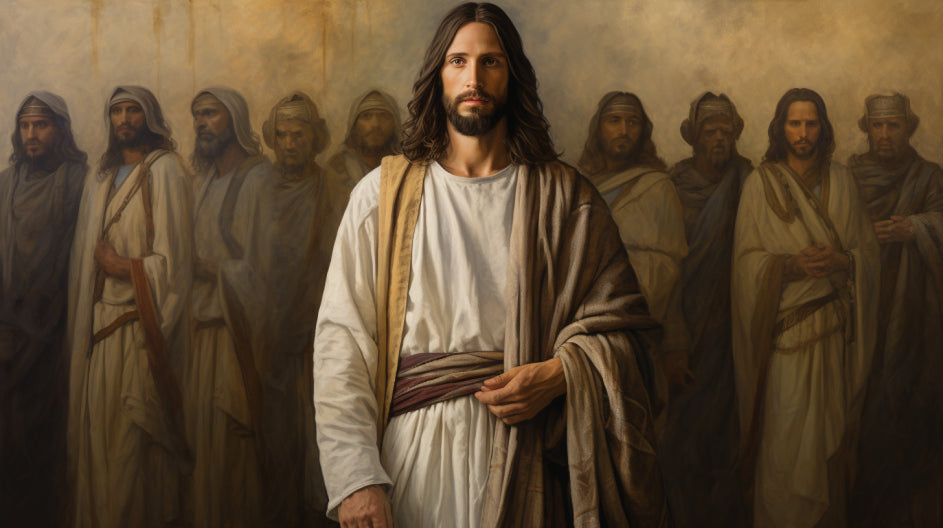
 In light of these insights, let's examine practical ways we can use Jesus Christ photos to enrich your meditation and foster spiritual growth. Begin by selecting a Jesus Christ photo that resonates with you. This could be a traditional Jesus Christ pic or a modern interpretation. Use this image as the focal point of your meditation. As you gaze upon the image, allow your mind to reflect on the qualities of Jesus Christ that inspire you. Perhaps it's His compassion, His wisdom, Transcendent ideals, or His unwavering faith. Let these qualities fill your consciousness and guide your thoughts. Over time, this focused meditation can foster deep spiritual growth. Perhaps you might find your greatest self along the way. For those looking beyond the surface, the Jesus Christ photo can become more than an image; it's a tool for encouragement, self-reflection, and motivation to connect with and benefit others.
In light of these insights, let's examine practical ways we can use Jesus Christ photos to enrich your meditation and foster spiritual growth. Begin by selecting a Jesus Christ photo that resonates with you. This could be a traditional Jesus Christ pic or a modern interpretation. Use this image as the focal point of your meditation. As you gaze upon the image, allow your mind to reflect on the qualities of Jesus Christ that inspire you. Perhaps it's His compassion, His wisdom, Transcendent ideals, or His unwavering faith. Let these qualities fill your consciousness and guide your thoughts. Over time, this focused meditation can foster deep spiritual growth. Perhaps you might find your greatest self along the way. For those looking beyond the surface, the Jesus Christ photo can become more than an image; it's a tool for encouragement, self-reflection, and motivation to connect with and benefit others.


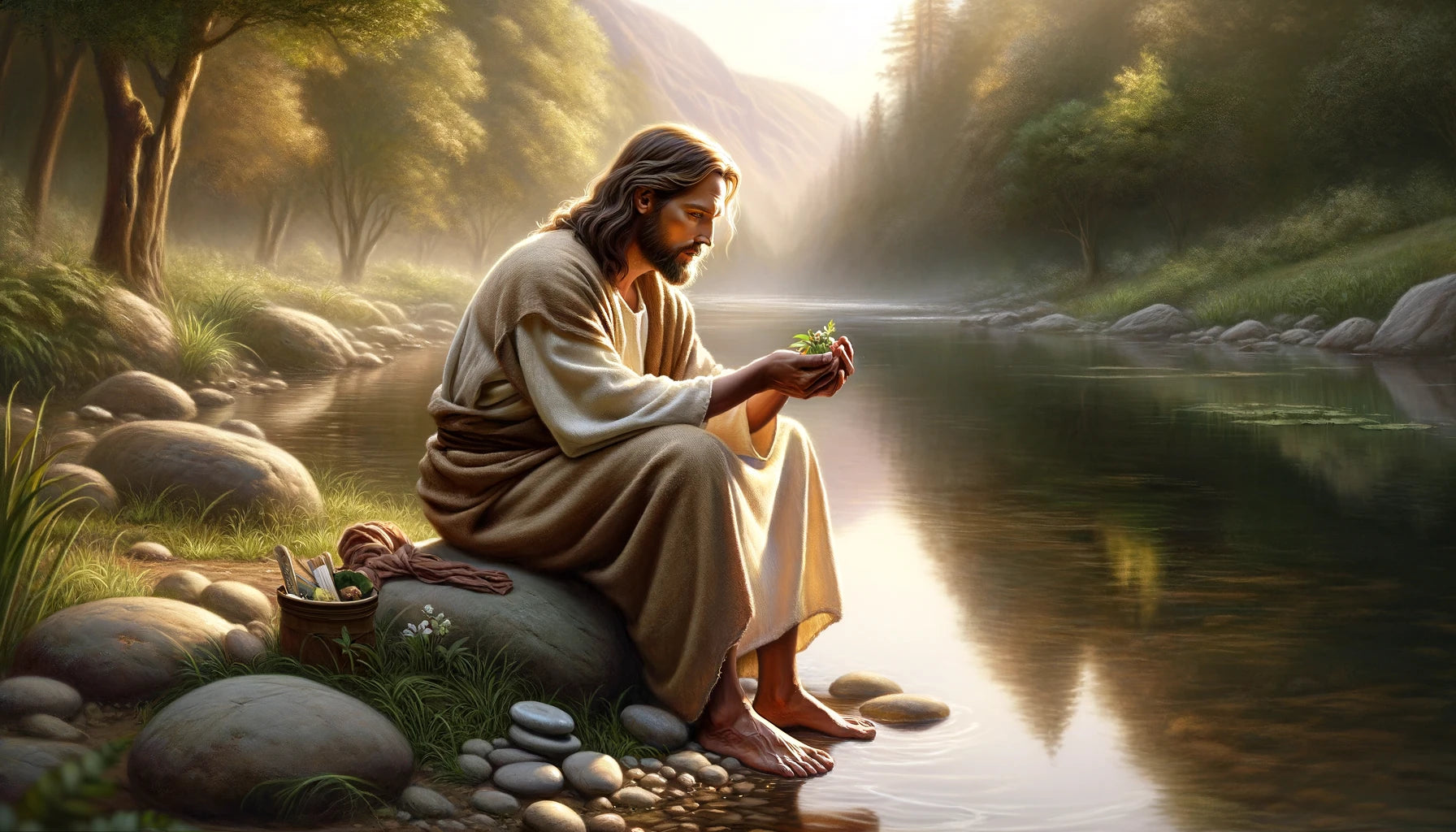
Key Takeaways
- Jesus Christ's photos and images serve as a tool for focusing faith and enhancing spiritual connection.
- They are revered as sacred representations that bridge the gap between humans and the divine.
- Jesus Christ photos foster an environment of reverence and devotion, reminding believers of Jesus's teachings, sacrifice, and love.
- These photos and images have a profound impact on the collective consciousness, shaping worship and strengthening the relationship with God.
Jesus Christ Photo
Technically, we don't have an actual photo of Jesus, but we do have pictures, portraits, paintings, and other representations of Jesus. So when we say photo, it means a picture or representation of Jesus. You might have noticed the prominence of Jesus Christ's portraits in Christian worship and devotion. This is not simply a matter of aesthetics or tradition; these images carry a profound significance rooted in historical context. Let's explore the importance and the story behind these photos and images of Jesus Christ.The importance of Jesus Portraits in Christian worship and devotion
 In envisioning "Jesus Christ Photo," we seek not a physical likeness but a portrayal that captures the essence of His teachings, actions, and divine love. Here are scripture references that highlight key aspects of Jesus Christ's character, serving as inspiration for artistic representations: Matthew 5:14-16: 'You are the light of the world. A town built on a hill cannot be hidden. Neither do people light a lamp and put it under a bowl. Instead they put it on its stand, and it gives light to everyone in the house. In the same way, let your light shine before others, that they may see your good deeds and glorify your Father in heaven.' This passage speaks to the illuminating presence of Jesus Christ, guiding artists to depict Him as a source of light and wisdom. John 10:11: 'I am the good shepherd. The good shepherd lays down his life for the sheep.' The imagery of Jesus as the Good Shepherd has been a powerful motif in Christian art, symbolizing His care, guidance, and the sacrificial nature of His love. Matthew 11:28-30: 'Come to me, all you who are weary and burdened, and I will give you rest. Take my yoke upon you and learn from me, for I am gentle and humble in heart, and you will find rest for your souls. For my yoke is easy and my burden is light.' These verses offer comfort and promise, inspiring portrayals of Jesus as a source of rest and refuge, inviting all to come unto Him. Luke 4:18-19: 'The Spirit of the Lord is on me, because he has anointed me to proclaim good news to the poor. He has sent me to proclaim freedom for the prisoners and recovery of sight for the blind, to set the oppressed free, to proclaim the year of the Lord’s favor.' This scripture reflects Jesus' mission of healing, liberation, and the proclamation of hope, directing artists to capture His compassion and purpose. 3 Nephi 17:24 (Book of Mormon): 'And when he had said these words, he wept, and the multitude bore record of it, and he took their little children, one by one, and blessed them, and prayed unto the Father for them.' This tender moment of Jesus blessing the children and showing His love for them is a poignant scene often depicted in art, emphasizing His kindness and love for all, especially the innocent and pure. Doctrine and Covenants 88:6: 'He that ascended up on high, as also he descended below all things, in that he comprehended all things, that he might be in all and through all things, the light of truth.' This verse speaks to the comprehensive and encompassing nature of Jesus Christ's ministry and atonement, encouraging representations that highlight His omnipresence and the depth of His sacrifice. Moses 7:55 (Pearl of Great Price): 'And the Holy Ghost fell on many, and they were caught up by the powers of heaven into Zion.' This passage can inspire depictions of Jesus Christ's role in bringing souls unto Heavenly Father, showcasing His role as the mediator and redeemer. Through these scriptures, artists and believers are invited to reflect on the multifaceted character of Jesus Christ—His divinity, compassion, wisdom, and love. Artistic interpretations inspired by these references seek to convey not just the physical image but the spiritual essence of the Savior, allowing viewers to feel His presence and teachings visually. In our devotion and worship, one might find that portraits of Jesus Christ serve as a significant tool for focusing faith and enhancing spiritual connection. These Jesus Christ photo representations, often revered as Jesus portrait images, hold a sacred place in the Christian worship landscape. They're not just visual aids; they're bridges to the divine, gateways to spiritual reflection and catalysts for heartfelt prayer. For many Christians, these images serve as a continual reminder of Jesus's teachings, his sacrifice, and his love. They stimulate a deeper connection with the divine, fostering an environment of reverence and devotion. This is the compelling power of Jesus' portrait images in Christian worship. Now, let's delve into the significance and historical context of Jesus Christ's photos and images.
In envisioning "Jesus Christ Photo," we seek not a physical likeness but a portrayal that captures the essence of His teachings, actions, and divine love. Here are scripture references that highlight key aspects of Jesus Christ's character, serving as inspiration for artistic representations: Matthew 5:14-16: 'You are the light of the world. A town built on a hill cannot be hidden. Neither do people light a lamp and put it under a bowl. Instead they put it on its stand, and it gives light to everyone in the house. In the same way, let your light shine before others, that they may see your good deeds and glorify your Father in heaven.' This passage speaks to the illuminating presence of Jesus Christ, guiding artists to depict Him as a source of light and wisdom. John 10:11: 'I am the good shepherd. The good shepherd lays down his life for the sheep.' The imagery of Jesus as the Good Shepherd has been a powerful motif in Christian art, symbolizing His care, guidance, and the sacrificial nature of His love. Matthew 11:28-30: 'Come to me, all you who are weary and burdened, and I will give you rest. Take my yoke upon you and learn from me, for I am gentle and humble in heart, and you will find rest for your souls. For my yoke is easy and my burden is light.' These verses offer comfort and promise, inspiring portrayals of Jesus as a source of rest and refuge, inviting all to come unto Him. Luke 4:18-19: 'The Spirit of the Lord is on me, because he has anointed me to proclaim good news to the poor. He has sent me to proclaim freedom for the prisoners and recovery of sight for the blind, to set the oppressed free, to proclaim the year of the Lord’s favor.' This scripture reflects Jesus' mission of healing, liberation, and the proclamation of hope, directing artists to capture His compassion and purpose. 3 Nephi 17:24 (Book of Mormon): 'And when he had said these words, he wept, and the multitude bore record of it, and he took their little children, one by one, and blessed them, and prayed unto the Father for them.' This tender moment of Jesus blessing the children and showing His love for them is a poignant scene often depicted in art, emphasizing His kindness and love for all, especially the innocent and pure. Doctrine and Covenants 88:6: 'He that ascended up on high, as also he descended below all things, in that he comprehended all things, that he might be in all and through all things, the light of truth.' This verse speaks to the comprehensive and encompassing nature of Jesus Christ's ministry and atonement, encouraging representations that highlight His omnipresence and the depth of His sacrifice. Moses 7:55 (Pearl of Great Price): 'And the Holy Ghost fell on many, and they were caught up by the powers of heaven into Zion.' This passage can inspire depictions of Jesus Christ's role in bringing souls unto Heavenly Father, showcasing His role as the mediator and redeemer. Through these scriptures, artists and believers are invited to reflect on the multifaceted character of Jesus Christ—His divinity, compassion, wisdom, and love. Artistic interpretations inspired by these references seek to convey not just the physical image but the spiritual essence of the Savior, allowing viewers to feel His presence and teachings visually. In our devotion and worship, one might find that portraits of Jesus Christ serve as a significant tool for focusing faith and enhancing spiritual connection. These Jesus Christ photo representations, often revered as Jesus portrait images, hold a sacred place in the Christian worship landscape. They're not just visual aids; they're bridges to the divine, gateways to spiritual reflection and catalysts for heartfelt prayer. For many Christians, these images serve as a continual reminder of Jesus's teachings, his sacrifice, and his love. They stimulate a deeper connection with the divine, fostering an environment of reverence and devotion. This is the compelling power of Jesus' portrait images in Christian worship. Now, let's delve into the significance and historical context of Jesus Christ's photos and images.
Historical context of Jesus Christ photos and images
The significance of Jesus Christ's photos and images can't be understated when taking a look at the historical context. These depictions of Jesus Christ serve as an enduring testament to His life and teachings, shaping the course of history. The overview of the significance and historical context of Jesus Christ's photos and images reveals how they have been used through centuries to disseminate the teachings of Christ, inspiring countless believers to lead lives marked by love, compassion, and service to others. The Jesus Christ photo is more than just a representation; it's a gateway into the spiritual realm, a tangible reminder of the divine presence in our midst. It's crucial to appreciate this historical context to fully grasp the profound impact these images have had on our collective consciousness.The Power of Visual Representation in Worship
 You're about to explore the influential role of visual art in religious practices, particularly the impact on believers. Consider the emotional response and spiritual connection that photos and portraits of Jesus Christ can evoke. Through this lens, we'll seek to understand the power of visual representation in worship.
You're about to explore the influential role of visual art in religious practices, particularly the impact on believers. Consider the emotional response and spiritual connection that photos and portraits of Jesus Christ can evoke. Through this lens, we'll seek to understand the power of visual representation in worship.
Discussing the role of visual art in religious practices and its influence on believers
Visual art, particularly the images of Jesus Christ, can play a role in your worship practices, influencing your faith and spiritual perceptions. The Jesus Christ photo, for instance, isn't merely a picture; it's a tool that can aid your understanding and interpretation of religious practices. Visual art, in this context, can enhance your spiritual engagement. The visual representation of Christ can evoke profound emotions, fostering a deeper connection with your faith. This impact on believers can lead to heightened spiritual growth and commitment. Thus, the power of visual art in worship cannot be undervalued. It can strengthen your relationship with God.Spiritual edification and inspiration of Jesus Christ's photos and portraits
 Consider how a photo or portrait of Jesus Christ can stir your emotions, fostering a deep spiritual connection that impacts your worship practices. A Jesus Christ photo isn't merely an image; it serves as a visual representation of faith, offering a tangible connection to the divine. These images can enrich your spiritual journey. Therefore, the power of a Jesus Christ portrait lies not only in its artistic value but also in its ability to evoke a profound emotional and spiritual response.
Consider how a photo or portrait of Jesus Christ can stir your emotions, fostering a deep spiritual connection that impacts your worship practices. A Jesus Christ photo isn't merely an image; it serves as a visual representation of faith, offering a tangible connection to the divine. These images can enrich your spiritual journey. Therefore, the power of a Jesus Christ portrait lies not only in its artistic value but also in its ability to evoke a profound emotional and spiritual response.
Historical Depictions of Jesus Christ
 It is important to understand the fact that historically accurate photographs of Jesus Christ don't exist. This requires an understanding that the images we see of Jesus Christ are interpretations and artistic representations, not factual depictions. So, let's critically examine these portrayals to better comprehend their authenticity and how they've shaped our perception of the Christian figurehead.
It is important to understand the fact that historically accurate photographs of Jesus Christ don't exist. This requires an understanding that the images we see of Jesus Christ are interpretations and artistic representations, not factual depictions. So, let's critically examine these portrayals to better comprehend their authenticity and how they've shaped our perception of the Christian figurehead.
Exploring the lack of historically accurate pictures of Jesus Christ
You might wonder why there's a noticeable lack of historically accurate photographs of Jesus Christ; let's research the authenticity of these images.- First, remember that photography wasn't invented until the 19th century, centuries after Christ's time.
- Second, the images of Christ we have today are artistic interpretations, not factual representations.
- Lastly, the religious pictures of Jesus we see are often influenced by culture and tradition, rather than historical accuracy.
Discussing the various interpretations and artistic representations of Jesus through portraits
 Now, let's visit the various artistic interpretations and representations of Jesus through portraits. You'll find a vast array of Jesus Christ photos, each embodying diverse artistic representations and interpretations. They range from the compassionate figure often portrayed in Western art, to more ethnically accurate depictions based on historical and anthropological data. Yet, each portrait's authenticity is subjective, contingent on personal belief and cultural context. They're not literal, historical photos, but artistic expressions of faith. They serve as a visual testament to Jesus' influence, embodying the ideals of empathy, love, and service to others. So, while these portraits may lack photographic authenticity, their symbolic authenticity remains undoubted.
Now, let's visit the various artistic interpretations and representations of Jesus through portraits. You'll find a vast array of Jesus Christ photos, each embodying diverse artistic representations and interpretations. They range from the compassionate figure often portrayed in Western art, to more ethnically accurate depictions based on historical and anthropological data. Yet, each portrait's authenticity is subjective, contingent on personal belief and cultural context. They're not literal, historical photos, but artistic expressions of faith. They serve as a visual testament to Jesus' influence, embodying the ideals of empathy, love, and service to others. So, while these portraits may lack photographic authenticity, their symbolic authenticity remains undoubted.
Iconography: Symbolism and Meaning in Jesus Christ Portraits
You're about to explore the symbolism found in portraits of Jesus Christ. These images, steeped in theological significance, communicate profound messages through their visual elements. It's a journey of understanding how art and faith intertwine, revealing layers of meaning in every stroke and pixel.Symbolic elements and motifs commonly found in Jesus Christ photos and artwork
 In examining the countless photos and artwork of Jesus Christ, you'll find a variety of symbolic elements and motifs that carry profound meanings. These serve as visual narratives, exploring the life, teachings, and divine nature of Christ.
In examining the countless photos and artwork of Jesus Christ, you'll find a variety of symbolic elements and motifs that carry profound meanings. These serve as visual narratives, exploring the life, teachings, and divine nature of Christ.
- The cross, a potent symbol of sacrifice and redemption, often appears in a Jesus Christ photo. It represents love bestowing itself on darkness- a symbol that Jesus and we can be loving despite the evil around us.
- Various poses of Christ, such as the 'Pantocrator' depict His divine authority and salvific role.
Examining the theological significance and intended messages conveyed through specific visual elements
 As we look into the iconography of Jesus Christ portraits, we'll uncover the theological significance and intended messages each visual element conveys. Whether it's a Jesus Christ photo, Christ images, or God Jesus images, each carries unique, profound symbolism. The aspects of these images, such as the halo, can signify divine light and holiness. The open palm in many pics of Jesus Christ typically represents peace and benevolence. Even the colors used in these depictions bear messages: red stands for sacrifice, blue for divine truth. Through such iconography, artists can communicate deep theological themes and inspire viewers to pursue a path of service and spirituality. In the next section, we turn our attention to famous Jesus Christ photos and artwork to further explore this rich symbolism.
As we look into the iconography of Jesus Christ portraits, we'll uncover the theological significance and intended messages each visual element conveys. Whether it's a Jesus Christ photo, Christ images, or God Jesus images, each carries unique, profound symbolism. The aspects of these images, such as the halo, can signify divine light and holiness. The open palm in many pics of Jesus Christ typically represents peace and benevolence. Even the colors used in these depictions bear messages: red stands for sacrifice, blue for divine truth. Through such iconography, artists can communicate deep theological themes and inspire viewers to pursue a path of service and spirituality. In the next section, we turn our attention to famous Jesus Christ photos and artwork to further explore this rich symbolism.
Famous Jesus Christ Photos and Artwork
Let's turn our attention to some of the most recognized photos and artistic renditions of Jesus Christ throughout history. You'll find that each piece reflects unique artistic styles and cultural influences of its time. To fully appreciate these works, we'll analyze these elements and their significance in portraying the image of Jesus.Highlighting renowned Jesus Christ photographs and portraits throughout history
You'll find countless renowned photographs and portraits of Jesus Christ that have made a significant impact throughout history. These Christ photos offer a visual representation, allowing us to better understand and appreciate the image of Jesus. In highlighting renowned Jesus Christ photographs and portraits throughout history, consider the following:- The Shroud of Turin: This Jesus Christ photo is believed by many to be the burial cloth of Jesus, bearing his image.
- The Veil of Veronica: According to tradition, this cloth holds the miraculous image of Jesus' face.
- Akiane Kramarik's Prince of Peace: A modern yet famous portrait of Jesus, painted by a child prodigy.
Analyzing the artistic styles and cultural influences represented in each artwork
 Now, take a closer look at the artistic styles and cultural influences embedded in these famous Jesus Christ photos and artwork. Each piece reveals the artist's unique approach and personal interpretation of Christ's image. The artwork ranges from realistic portrayals to abstract renditions, reflecting a variety of artistic styles. But it's not just about the artist's technique. The cultural influences are evident too. From the traditional Eastern Orthodox icons to the Western Renaissance interpretations, each culture adds its distinctive touch to the depiction of Christ. These cultural influences shape the artwork, providing a deeper understanding of each society's relationship with the divine. This analysis allows you to appreciate not only the artwork itself but also the rich tapestry of cultural diversity and historical context that it represents.
Now, take a closer look at the artistic styles and cultural influences embedded in these famous Jesus Christ photos and artwork. Each piece reveals the artist's unique approach and personal interpretation of Christ's image. The artwork ranges from realistic portrayals to abstract renditions, reflecting a variety of artistic styles. But it's not just about the artist's technique. The cultural influences are evident too. From the traditional Eastern Orthodox icons to the Western Renaissance interpretations, each culture adds its distinctive touch to the depiction of Christ. These cultural influences shape the artwork, providing a deeper understanding of each society's relationship with the divine. This analysis allows you to appreciate not only the artwork itself but also the rich tapestry of cultural diversity and historical context that it represents.
Controversies and Challenges Surrounding Jesus Christ Portraits
You'll find that controversies surrounding Jesus Christ portraits often center on issues of ethnic representation and accuracy. Another pertinent challenge is the potential for idolatry and misuse of such images within religious contexts. It's crucial to approach these sensitive topics with respect, understanding, and a critical eye.Addressing the debates regarding ethnic representation and accuracy in Jesus Christ photos
In your exploration of Jesus Christ photos, you'll encounter a myriad of debates surrounding the ethnic representation and accuracy in these images, fostering significant controversy and challenges. These debates often revolve around:- The Western depiction of Jesus as a white man, while historical and geographical context suggest Middle Eastern ethnicity.
- The accuracy of Jesus's portrayal, given the absence of contemporary visual documentation.
- The impact of bias, culture, and politics on Jesus Christ photo representation.
The potential for idolatry and misuse of images in religious practices
 As you go deeper into the world of Jesus Christ photos, another controversy you're likely to confront is the potential for idolatry and misuse of these images in religious practices. Photos of Jesus Christ, while a significant part of many people's faith, can sometimes blur the line between respect, love, and idolatry. This stems from the belief that undue reverence for a Jesus Christ photo could lead to idol worship, a practice condemned in many religious teachings. Moreover, the misuse of images in religious practices, such as using them for commercial or disrespectful purposes, is a growing concern. Therefore, while these images play a valuable role in faith and devotion, the potential for their misuse and association with idolatry casts a shadow of controversy over their use.
As you go deeper into the world of Jesus Christ photos, another controversy you're likely to confront is the potential for idolatry and misuse of these images in religious practices. Photos of Jesus Christ, while a significant part of many people's faith, can sometimes blur the line between respect, love, and idolatry. This stems from the belief that undue reverence for a Jesus Christ photo could lead to idol worship, a practice condemned in many religious teachings. Moreover, the misuse of images in religious practices, such as using them for commercial or disrespectful purposes, is a growing concern. Therefore, while these images play a valuable role in faith and devotion, the potential for their misuse and association with idolatry casts a shadow of controversy over their use.
Utilizing Jesus Christ Photos as Tools for Worship and Reflection
Uplifting portraits can enrich your devotional practices. We'll provide you with practical suggestions on how to use these images for meditation and spiritual growth. This can open up a new dimension in your worship, turning a simple photo into a profound tool for reflection.
Exploring how Jesus Christ portraits can enhance personal devotional practices
By using Jesus Christ photos during your devotions, you're able to create a more focused and personal connection with your faith. Exploring the various portraits of Christ can offer a visual dimension to your devotional practices, fostering deeper reflection and spiritual growth.- Portraits can serve as a tangible reminder of Jesus's teachings and life, providing a focal point during prayer or meditation.
- A Jesus Christ photo can evoke emotions, helping you empathize with his experiences and teachings.
- These images can inspire contemplation, encouraging you to consider Jesus's lessons in the context of your own life.
Providing practical suggestions on using Jesus Christ photos for meditation and spiritual growth
 In light of these insights, let's examine practical ways we can use Jesus Christ photos to enrich your meditation and foster spiritual growth. Begin by selecting a Jesus Christ photo that resonates with you. This could be a traditional Jesus Christ pic or a modern interpretation. Use this image as the focal point of your meditation. As you gaze upon the image, allow your mind to reflect on the qualities of Jesus Christ that inspire you. Perhaps it's His compassion, His wisdom, Transcendent ideals, or His unwavering faith. Let these qualities fill your consciousness and guide your thoughts. Over time, this focused meditation can foster deep spiritual growth. Perhaps you might find your greatest self along the way. For those looking beyond the surface, the Jesus Christ photo can become more than an image; it's a tool for encouragement, self-reflection, and motivation to connect with and benefit others.
In light of these insights, let's examine practical ways we can use Jesus Christ photos to enrich your meditation and foster spiritual growth. Begin by selecting a Jesus Christ photo that resonates with you. This could be a traditional Jesus Christ pic or a modern interpretation. Use this image as the focal point of your meditation. As you gaze upon the image, allow your mind to reflect on the qualities of Jesus Christ that inspire you. Perhaps it's His compassion, His wisdom, Transcendent ideals, or His unwavering faith. Let these qualities fill your consciousness and guide your thoughts. Over time, this focused meditation can foster deep spiritual growth. Perhaps you might find your greatest self along the way. For those looking beyond the surface, the Jesus Christ photo can become more than an image; it's a tool for encouragement, self-reflection, and motivation to connect with and benefit others.
Jesus Christ Photos in a Digital Age
You're now looking at the shift of Jesus Christ photos into the digital age, where accessibility and impact of digital media are notable. Consider how the wide dissemination of these religious images has been largely influenced by this digital revolution. Additionally, explores the role of social media platforms in sharing and engaging in discussions about Jesus Christ's artwork.Accessibility and impact of digital media on the dissemination of Jesus Christ photos
With the advent of digital media, you've likely noticed a surge in the distribution and accessibility of Jesus Christ photos online. This widespread dissemination has significantly impacted the way people perceive and interact with faith-based content, particularly Jesus Christ photos. These digital advancements have led to:- More people have access to religious and spiritual images like the Jesus Christ photo, fostering a sense of global community and shared faith.
- The ability to share and discuss these images instantly, thereby facilitating conversations around faith and spirituality.
- A shift in how we engage with religious content, with digital media providing a platform for dynamic and interactive faith-based experiences. Perhaps the variety of spiritual works may also cultivate an open-minded, inclusive, and community-oriented lifestyle.

The role of social media platforms in sharing and discussing Jesus Christ's artwork
As your digital footprint expands, you'll discover the profound influence social media has on sharing and discussing Jesus Christ's artwork in today's digital age. Social media platforms have become pivotal in circulating the Jesus Christ photo, fostering a space for discourse around interpretations, meanings, and personal reflections. They've allowed for an immediate and vast sharing of this artwork, connecting individuals across various cultural, societal, and geographical boundaries. Social media has become a strong missionary platform where anyone can share their values- and sometimes the value of a picture can be worth, well, a thousand words. These platforms also facilitate constructive discussions, enabling an exchange of insights that can deepen your understanding of the artwork's significance. Through this digital sharing and discussing of Jesus Christ artwork, you're not just a passive viewer, but an active participant in a broader dialogue about faith, devotion, and the impact of religious iconography in our modern world.The Future of Jesus Christ Photos
As you look ahead, consider the future of Jesus Christ photos in terms of contemporary and emerging trends. Reflect on how modern artists are capturing the essence of Jesus Christ in their work. This ongoing evolution is not only fascinating but also demonstrates the enduring relevance of Jesus Christ's image in our culture.
Contemporary and emerging trends in Jesus Christ portraiture
In light of recent trends, you'll notice a significant shift in how Jesus Christ is portrayed in contemporary art and photography. This shift, largely influenced by modern aesthetics, reflects changes in our cultural understandings and perceptions of Jesus.- The rise of digital art forms has made it possible to create a Jesus Christ photo that's strikingly modern and visually arresting.
- Artists today are increasingly exploring non-traditional portrayals of Jesus, infusing their paintings with personal and cultural interpretations.
- The use of mixed media in art has opened up new possibilities for expressing the divine, resulting in a more immersive and multi-layered viewing experience- and, perhaps, more missionary opportunities.
Highlighting the work of modern artists who strive to capture the essence of Jesus Christ in their photos
You'll find many modern artists are striving to capture the essence of Jesus Christ in their photos, showcasing a fresh perspective on divine portraiture. Their work breathes new life into the genre, presenting a diverse array of interpretations that reflect the multifaceted nature of Jesus Christ. These artists, through their innovative techniques and unique perspectives, are redefining the traditional Jesus Christ photo. They understand that the essence of Jesus Christ is not just his physical appearance, but also his teachings, his love, and his devotion. They're not merely creating images; they're crafting visual narratives that invoke reflection and inspire service, love, and connection to others. As their work continues to evolve, it's clear that the future of Jesus Christ photos will continue to expand global missionary efforts for all to come to know Jesus.Conclusion
In conclusion, Jesus Christ's photos hold a pivotal role in fostering worship and spiritual reflection. They serve as a potent tool for you to deepen your faith journey, connecting you more intimately with the teachings and life of Christ. Engage with such artwork, and you'll find it can be a profound aid in understanding and living your faith. Art can also serve as a tool for missionary work.The importance of Jesus Christ photos in promoting worship and spiritual reflection
As you reflect on Jesus Christ's photos, you'll find they serve as a powerful tool for deepening your worship and spiritual contemplation. These images bring to life the essence of Christ's message, promoting a profound connection with others. Through the lens of a Jesus Christ photo, you're invited to:- Engage with the tangible aspects of your faith, enhancing your worship experience.
- Foster an atmosphere of spiritual reflection, allowing you to examine your beliefs more closely.
- Promote dialogue and community, inspiring others to share in ours and their spiritual journey.
We encourage you to engage with Jesus Christ's artwork as a means of deepening your faith journey
As you become curious about Jesus Christ's artwork, you'll discover a profound way to deepen your faith journey. These expressive pieces, whether in the form of a Jesus Christ photo or picture or a more complex piece, can serve as meaningful touchstones, encouraging you to engage more fully with your faith. They offer a visual representation of Christ's teachings, stimulating contemplation and prayer. Engaging with Jesus Christ's artwork challenges you to reflect, question, and grow, fostering a deeper understanding of your faith and providing a tangible means of connecting with the teachings of Christ. It's a powerful, personal avenue for deepening your faith journey.

